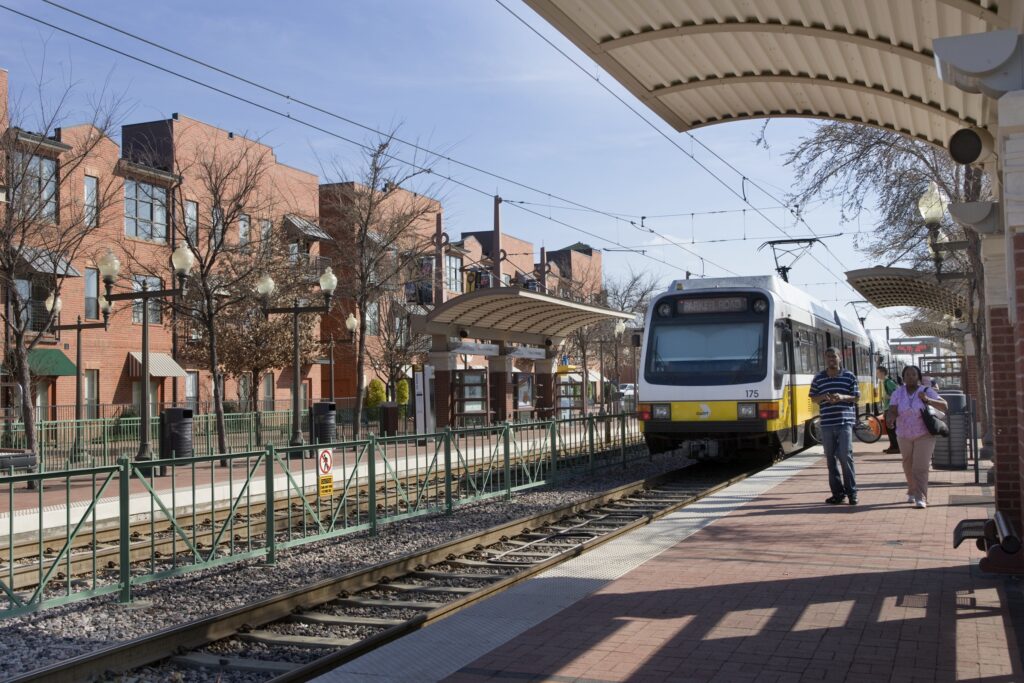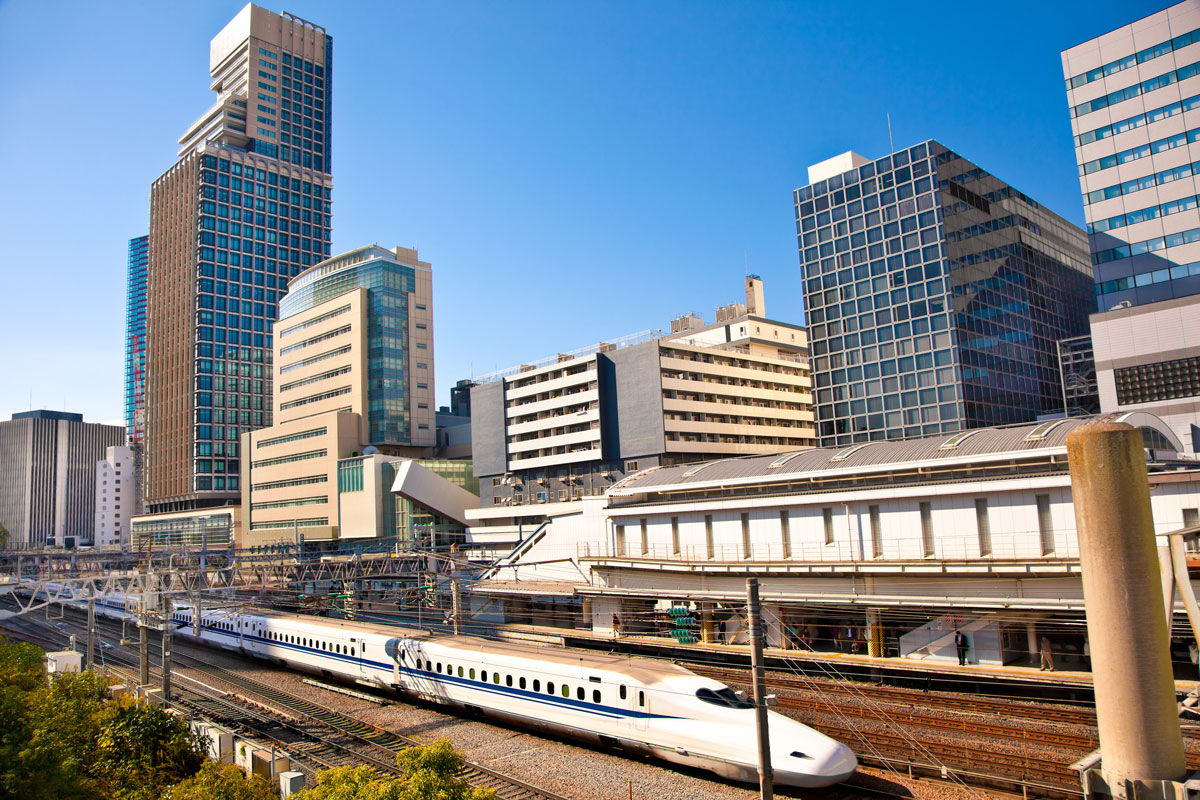On Monday night, the Plano City Council unanimously approved a resolution in support of reducing its contribution to Dallas Area Rapid Transit by 25 percent. This does not mean that Plano can now withhold a quarter of its 1-cent sales tax allocation to the transit agency, which its voters directed the city to pay upon joining DART in 1983. Think of this as table setting should the chance ever present itself, an existential concern draped over the largest provider of public transportation in North Texas.
Plano is not the only city to explore walking back some of its contribution in recent weeks, but it is the only one that has gone so far as to approve a resolution that supports doing so.
The agency’s existing operating arrangement makes the opportunity for a reduction slim. For one of the member cities to reduce its full 1-cent sales tax allocation, the DART board would have to agree to hold an election that puts the matter in front of voters in all 13 member cities. (They would still be on the hook for their debt obligations.) And a single city could not do it alone. But if board members did agree to hold that election and voters in those 13 member cities did decide to reduce contributions, DART says that would equal about $6 billion in lost revenue over the next 20 years.
The potential workaround is in Austin, where the Texas Legislature could pass a law that gives member cities more power over how much they pay for DART’s services. Plano has supported failed legislation in each of the last two sessions that would have opened the agency’s statute for review. The interest at the state capitol in limiting the power of local governments has transit advocates concerned.
If a reduction ever becomes possible, Monday’s vote is a path for Plano to save an estimated $30 million a year from its current total contribution of about $115 million. Dallas’ northern neighbor is arguing to lower its contribution by using ridership numbers that, while improving steadily since the pandemic, are about 80 percent of what they were in 2019. The majority of Plano is covered by buses that arrive every 40 to 60 minutes, which are the most infrequent in the network. There are two existing light rail stops with another two on the way at Shiloh Road and 12th Street, as well as GoLink on-demand and shuttle service.
“We’re not talking about a reduction of services,” said Andrew Fortune, Plano’s director of government relations. “What we are talking about is capping revenues today. We know how much it costs this year, today, to run what currently exists.”
DART disagrees. The agency has a $1.8 billion budget, which is split between $687 million in operating costs, $894 million for capital projects and non-operating allocations, and another $221 million for debt service. It anticipates generating about $880 million in sales tax revenue this year. Its CEO, Nadine Lee, has said reducing those contributions would spell doom for many of the agency’s programs aimed at increasing security, frequency, and reliability—the very things that Plano and other partners report being frustrated with.
Before Lee’s 2021 hiring, DART’s history was full of major capital projects that helped create the longest and least-efficient light rail system in America. She has instead focused on the small, essential improvements to boost service and reliability: implementing a new bus network redesign built around high-ridership routes with more frequent pick-ups, staffing up, improving security and cleanliness, and repairing and replacing old buses and trains.
Its major projects are either near complete or tabled. The Silver Line, the $2.1 billion, 26-mile rail project linking Plano and other northern suburbs with DFW Airport, is expected to begin service by early 2026. DART removed the $2 billion D2 subway in downtown Dallas from its financial plan. An agency known for huge, expensive capital projects is now shifting its focus to operations, which, Lee says, will be imperiled should its sales tax contributions dwindle.
“If you take money away, we will not be able to keep up with what we are doing today,” Lee told the Dallas City Council in April when it was exploring reducing its contribution to pay down some of its pension obligations. “I am certainly concerned about conversations that imply that we don’t need as much of the sales tax revenue that we collect because I am certain that none of our service area cities could deal with a quarter-cent less than what we collect today.”
Plano has questioned the return on its investment since at least 2020, when it first asked DART to produce a report detailing how its tax contributions were being spent. Plano state Rep. Matt Shaheen authored bills in the 2021 and 2023 legislative sessions to amend the language in the statute to force analysis for each of the member cities. (DART did not support either bill.) Last year’s bill died in the House, but DART still hired accounting firm Ernst & Young to conduct a value study for each of its cities.
“There was never a moment for Plano that said we’re looking for an exit strategy,” Plano Mayor John Muns told me during an interview in his office last month. “We have no interest in that whatsoever. We were just trying to create a value study so we could maybe come up with an opportunity to find out how we can increase ridership. That’s really all we’re trying to do, is to really have it better utilized than it is today.”
Muns recalled state Rep. Terry Canales (D-Edinburg), the chair of the House Transportation Committee, telling the city and the agency last year to “go back and work it out.” They’re trying. The DART board approved paying Ernst & Young about $1 million to conduct an independent study that seeks to quantify what each member city is receiving related to the amount each contributes. That is expected to be delivered as early as August. But Plano still made its move.
“There’s no ridership. The buses are empty,” Muns said before the vote had been placed on the agenda. “We’re not really doing what we need to do to connect the people that really need that ridership.”
There has long been a push-pull between the city of Dallas—which accounts for more than half of the agency’s sales tax contributions—and the smaller member cities. A survey by the North Central Texas Council of Governments found that 72 percent of DART riders reported living in the city of Dallas. Most of the frequent routes where buses arrive every 15 to 20 minutes operate in Dallas, in part because that’s where ridership is. The undercurrent of Plano’s decision is concern that its tax dollars are subsidizing services in Dallas, and it’s seeking proof one way or another.
It is also thinking more regionally instead of locally. Muns would like to see DART be more proactive in recruiting new member cities, particularly fast-growing neighbors like Frisco, McKinney, and The Colony, whose residents, he says, park and ride in Plano. He talks about the need to extend into new employment centers, that Plano riders want to take it to points beyond.
“All we were trying to do was connect more of our community to where they need to go, and DART was not doing that,” Muns said. “No longer is it [the case] where everybody is going south in the morning and north in the evening. Those days are over. And so, that’s the problem—I think at one point we used to look at it that way, that we just need to move people around Plano who live in Plano, and no, that’s not the case any longer.”
Last August, Muns joined the mayors of Carrollton, Dallas, Fort Worth, and Irving in requesting the North Central Texas Council of Governments commission a study of regional transportation needs, incorporating not just DART but the Fort Worth Transportation Authority, Denton County Transportation Authority, and other such agencies operating in North Texas. They want it done before the next legislative session and have hired McKesson to lead the effort.
“As member cities of a transit authority, we acknowledge and embrace that the growth of the region requires an efficient transit solution in order to provide predictable, cost effective, and reliable mobility for residents and businesses,” read the letter. “We believe a comprehensive study is needed to assess the effectiveness of regional transit today and what regional transit should look like for the next 40 years.”
Plano has recently been in the middle of a few attempted shakeups related to DART’s operations. Paul Wageman, one of its board appointees, was one of the loudest proponents of requiring a two-thirds vote rather than a simple majority to add or reduce DART services in a member city. That didn’t receive enough support to pass earlier this month.
Too, emails obtained by D Magazine indicate that Plano City Manager Mark Israelson has moved away from having regular meetings with the agency. He sent an email in February indefinitely postponing a meeting between DART and the city in which he directed the agency to complete its “report on the cost of service for Plano” and “a plan for adding additional services.” (A DART spokesperson said they ultimately met in June.)
Israelson cited the city’s past suggestions of “a circulator system in the Legacy Business Park” and “[e]xpress bus service from Legacy Business Park to the airports,” both of which, he wrote, were first suggested during former CEO Gary Thomas’ tenure. (The Silver Line, which the DART board approved in 2018, will take Plano riders to DFW Airport.)
“We are asking that our meeting be postponed until we have more progress on our previous requests and the regional transit study is able to be completed,” Israelson wrote.
Under Lee’s leadership, DART has approached things in almost the opposite way. She’s meeting with cities to discuss urban planning initiatives and their individual area plans, figuring out where to strategically place transit next to housing, jobs, and other amenities. She says she understands that transit is too often only used by those who rely upon it; the challenge is making it an option for more people.
“What we want to do is make sure … DART becomes integral to their transportation master plans in each of our cities,” she said last year. “The future depends on them being able to leverage DART services.”
Somewhat ironically, Downtown Plano is an example of that brand of success. The light rail station there opened in 2002, and apartments, retail, dining, and other uses followed. Rice University’s Kinder Institute studied it in 2016 as a case study for other mid-size cities, and the American Planning Association named it one of the Great Places in America the year before.
But Plano’s appetite for density collapsed in 2015 under a challenge from about 4,000 residents. They signed a petition to repeal a master plan update that would’ve rezoned transit corridors and retail strip centers into areas for a denser mix of uses to accommodate growth in a city that had no more land with which to sprawl. A nasty legal fight ensued, and the city eventually backed off in 2020 and replaced the plan with one that “does not anticipate significant changes in population or residential development in the future.”
Today, Plano appears to be considering its neighbors and regional growth, even before the two studies are complete. Despite Lee’s warning of the impact of reducing its contribution—that $6 billion cumulative loss over the next 20 years—Plano has opened the door to what the agency says would be a calamity.
Author






